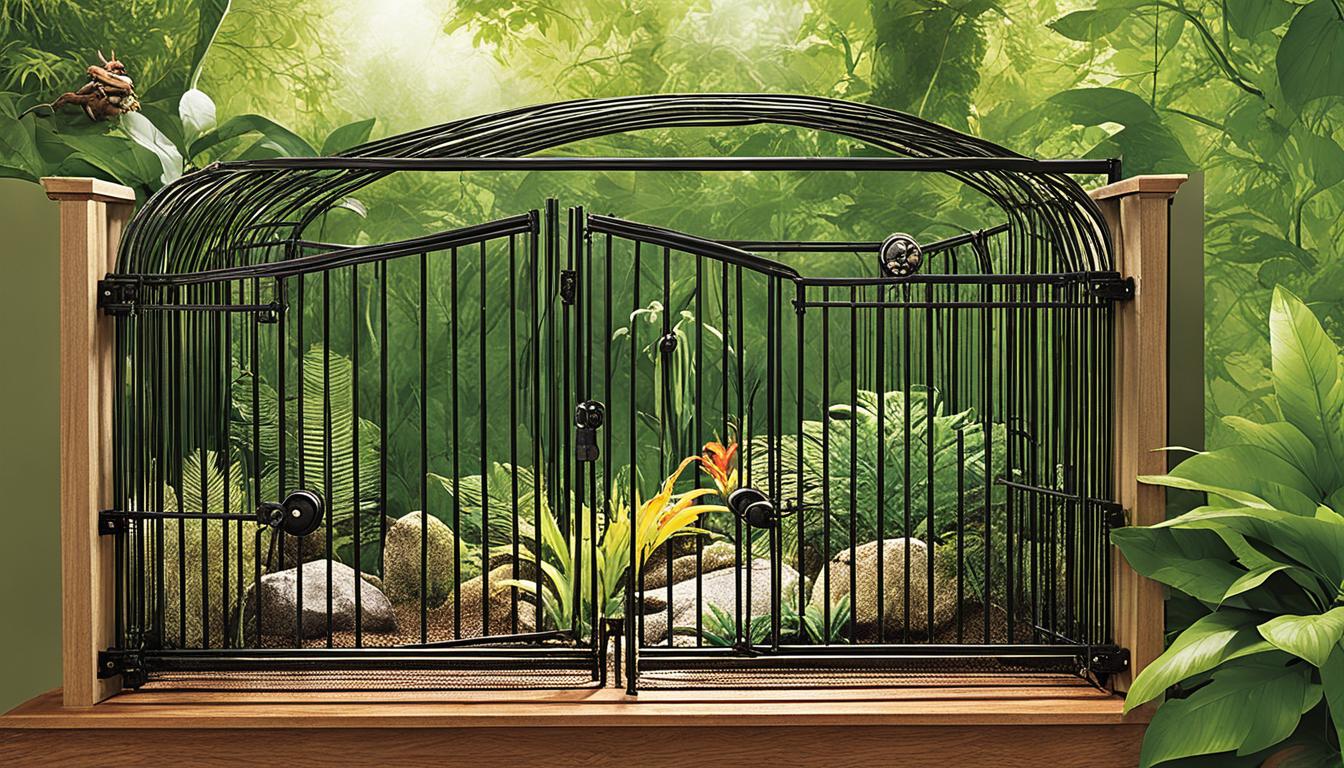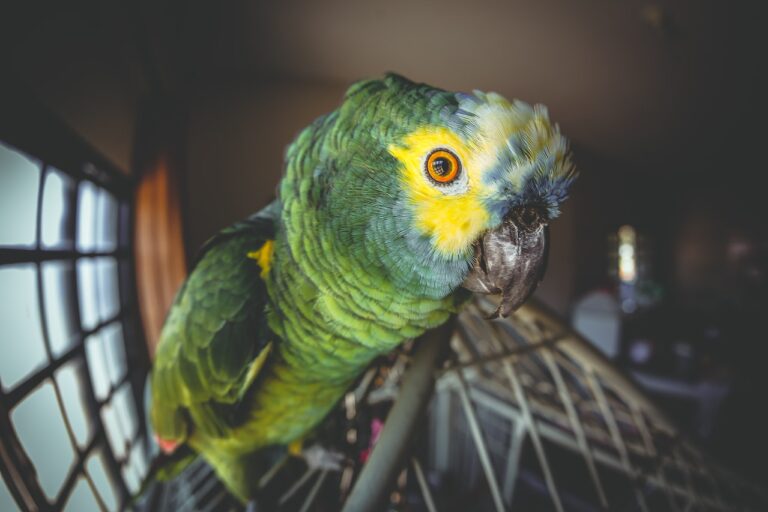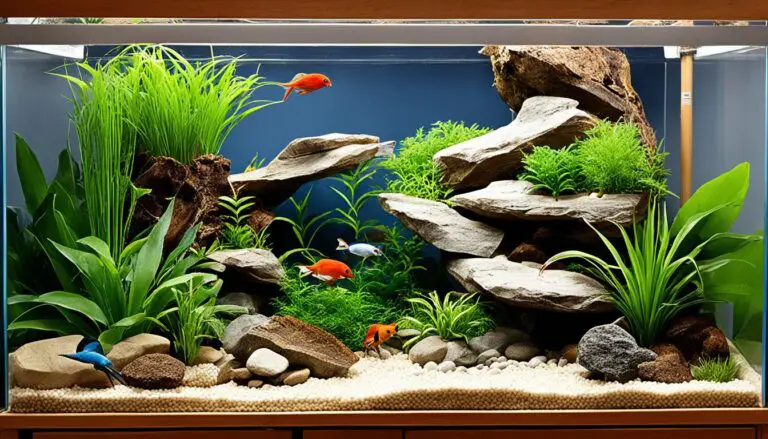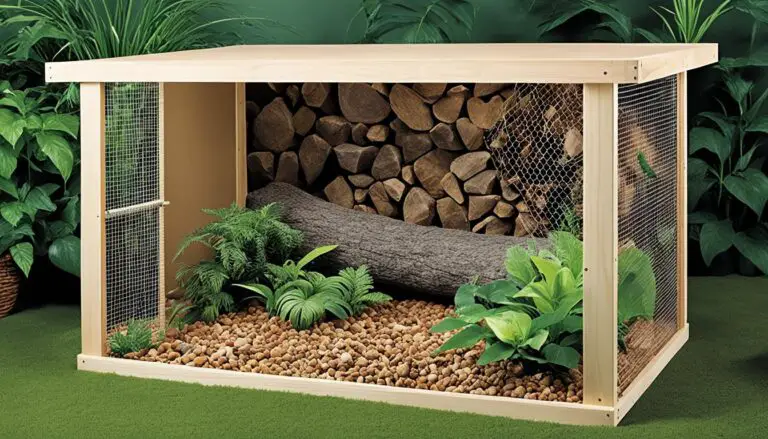Exotic Pet Housing Escape Prevention: Quick Tips
Exotic pets require secure enclosures to prevent them from escaping and ensure their safety. Understanding your pet’s behavior, investing in a secure enclosure, conducting regular inspections and maintenance, and escape-proofing your home are essential for preventing escapes.
Key Takeaways:
- Exotic pets need secure enclosures to prevent escapes
- Understanding your pet’s behavior helps anticipate potential escape routes
- Invest in a secure enclosure designed for your pet’s species and size
- Regularly inspect and maintain the enclosure to address potential escape risks
- Escape-proof your home by sealing potential escape routes
Understanding Your Exotic Pet’s Behavior
Before bringing an exotic pet into your home, it is crucial to research and understand their behavior. Different species exhibit unique escape tendencies and abilities. By familiarizing yourself with the natural behaviors of your pet, you can anticipate potential escape routes and take proactive measures to prevent them from fleeing.
For example, some reptiles possess incredible climbing abilities, allowing them to scale various surfaces with ease. If you have a reptilian pet, it is essential to create an enclosure that withstands their climbing tendencies. On the other hand, certain birds have an innate urge to fly long distances. Understanding this instinct can help you provide a secure environment both within and outside their habitat.
Knowledge of your exotic pet’s behavior is the key to successful escape prevention. By understanding their instincts and abilities, you can create an environment that caters to their needs while ensuring their safety and security.
Anticipating Escape Routes
One of the benefits of understanding your exotic pet’s behavior is being able to anticipate their escape routes. By identifying their preferred hiding spots or potential weak points in their habitat, you can implement effective solutions to keep them contained. For instance, if you have a small mammal known for its digging capabilities, make sure their enclosure has a secure bottom layer and is buried deep enough to prevent any escape attempts.
Taking Proactive Measures
Once you are aware of your pet’s behavior and escape tendencies, it is essential to take proactive measures to prevent escape incidents. This can include reinforcing enclosures, adding extra barriers, or implementing escape-proofing techniques specific to your pet’s needs. If your pet is a skilled climber, consider installing a secure lid or mesh covering to prevent them from reaching the top of their habitat.
| Exotic Pet Behavior | Escape Tendencies | Climbing Abilities |
|---|---|---|
| Reptiles | Some reptiles have a tendency to escape their enclosures, especially if they are not adequately secured. | Many reptiles possess excellent climbing abilities and can navigate intricate structures effortlessly. |
| Birds | Birds, particularly those naturally inclined to fly long distances, may attempt to escape through open windows or doors, attracted to the freedom of the outdoors. | Some birds have the innate ability to explore their surroundings by climbing and hopping, making escape attempts from open enclosures possible. |
| Small Mammals | Some small mammals, such as rodents or ferrets, may attempt to squeeze through small openings or chew their way out of enclosures. | While not all small mammals are skilled climbers, some may attempt to climb or jump to reach areas outside their enclosures. |
Understanding your exotic pet’s behavior and taking proactive measures can go a long way in preventing escapes and ensuring their safety. By creating an environment that meets their natural instincts and needs, you can provide a secure and fulfilling life for your unique companion.
Investing in a Secure Enclosure
When it comes to ensuring the safety and security of your exotic pet, investing in a secure enclosure is paramount. A well-designed and properly constructed enclosure can play a crucial role in preventing escape incidents and providing a safe haven for your beloved companion.
Here are some important factors to consider when choosing and maintaining a secure enclosure:
- Species and Size: Select an enclosure that is specifically designed for your pet’s species and size. Different animals have unique needs and behaviors, so it’s essential to choose an enclosure that meets their requirements.
- No Gaps or Openings: Ensure that the enclosure has no gaps or openings that your pet can squeeze through. Exotic pets can be adept at finding even the tiniest spaces to escape from, so pay attention to the smallest details when evaluating the enclosure’s design.
- Regular Inspection: Regularly check the locks, latches, and structural integrity of the enclosure to make sure they are secure. Over time, wear and tear or weather conditions can compromise the enclosure’s effectiveness, so be proactive in identifying and addressing any potential vulnerabilities.
- Additional Barriers: Consider adding extra layers of protection to the enclosure. Mesh covers or lids, for example, can provide an additional barrier that prevents escape attempts without obstructing your pet’s visibility or ventilation.
“Investing in a secure enclosure is not just a matter of preventing escapes. It is an investment in your pet’s safety, well-being, and overall happiness.”
Remember, the goal is to create an environment that guarantees the utmost security for your exotic pet. By carefully selecting and maintaining a secure enclosure, you can minimize the risk of escape incidents and provide your pet with a comfortable and protected space to thrive.

Top Secure Enclosure Brands
| Brand | Features | Price Range |
|---|---|---|
| ABC Enclosures | Heavy-duty construction, escape-proof design | $$$ |
| XYZ Habitats | Customizable options, secure locking mechanisms | $$$ |
| Safe Haven Pet Enclosures | High-quality materials, sturdy enclosures | $$ |
Regular Inspections and Maintenance
Ensuring the safety and security of your exotic pet begins with regular inspections and maintenance of their enclosure. By proactively identifying and addressing any potential escape risks, you can provide a secure environment for your beloved companion.
During your inspections, carefully examine the structure of the enclosure for any signs of wear and tear. Check for loose panels, damaged wires, or weakened barriers that could provide an opportunity for your pet to escape. Promptly replace any faulty components to maintain the integrity of the enclosure.
It’s equally important to inspect the surroundings of the enclosure for potential escape hazards. Look out for loose cords that your pet may chew through, sharp objects they could injure themselves on, or toxic plants that might entice them to explore beyond their designated area.
Regular inspections and maintenance are crucial for identifying and addressing escape risks, providing a safe environment for your exotic pet.
By conducting routine assessments of both the enclosure and its surroundings, you can stay proactive in preventing escape incidents. Remember, the safety of your pet is of utmost importance, and regular inspections and maintenance play a key role in ensuring their well-being.
| Inspection Checklist | Action Items |
|---|---|
| Enclosure structure |
|
| Surroundings |
|
Escape-Proofing Your Home
In addition to securing your pet’s enclosure, it is important to escape-proof your home. Creating a secure home environment will help prevent any potential escape incidents and ensure the safety of your exotic pet.
Sealing Potential Escape Routes
To seal off potential escape routes, carefully inspect your home for any gaps under doors, windows, or vents. These small openings may act as secret pathways for your pet to slip out unnoticed. By sealing these gaps, you can significantly reduce the risk of your pet escaping.
“Preventing escape incidents requires attention to the smallest details. By identifying and sealing every potential escape route, you create a safe haven for your exotic companion.” – Dr. Emily Roberts, Exotic Pet Specialist
When handling your pet or during cleaning and feeding routines, make sure to keep all doors and windows closed. Even a momentary lapse in attention can lead to an escape. Taking this simple precaution can greatly reduce the chances of an accidental escape.
Installing Baby Gates and Pet Barriers
Consider installing baby gates or pet barriers to restrict access to certain areas of your home. These barriers can prevent your pet from entering spaces where they may get lost or injured. It’s important to create boundaries and limit your pet’s access to areas that are difficult to monitor at all times.
Here’s an example of a baby gate that can be installed to prevent escapes:

| Escape-Proof Baby Gate Features | Benefits |
|---|---|
| Sturdy construction | Ensures durability and reliability |
| Adjustable width | Fits doorways and openings of various sizes |
| Easy installation and operation | Convenient for everyday use |
| Secure locking mechanism | Prevents accidental opening and escapes |
By escape-proofing your home, you provide a secure environment for your exotic pet, reducing the likelihood of escape incidents and ensuring their well-being.
Identification and Microchipping
Despite your best efforts, accidents can still happen, and your exotic pet may find a way to escape. Increase the chances of a safe return by identifying and microchipping your pet. Attach a collar with identification tags that include your contact information. Microchipping is a permanent and secure form of identification that can help reunite you with your pet if they are found and taken to a vet or animal shelter.
| Identification Method | Pros | Cons |
|---|---|---|
| Collar with ID tags | Quick and simple to attach | Tags can become damaged or lost |
| Microchipping | Permanent and secure form of identification | Requires scanning by a professional |
Collar with ID tags
A collar with identification tags is a basic yet effective way to ensure your pet can be easily identified if they go missing. Make sure to include your pet’s name and your current contact information on the tags. Regularly check the collar for any signs of wear or damage, and replace tags if necessary.
Microchipping
Microchipping is a more advanced method of pet identification. A small microchip, about the size of a grain of rice, is implanted under your pet’s skin. This microchip contains a unique identification number that can be scanned by a veterinarian or animal shelter. Once scanned, they can access your contact information and help facilitate your pet’s safe return.
“Microchipping is an essential step in lost pet prevention. It provides a reliable and permanent means of identification, ensuring that even if your exotic pet loses its collar or tags, it can still be identified and returned to you,” says Dr. Sarah Thompson, a veterinarian specializing in exotic pets.
While a collar with ID tags and microchipping are both effective forms of pet identification, they provide an extra layer of security when used together. Remember to keep your contact information up to date with the microchip registry and update your pet’s ID tags if you move or change phone numbers.
Conclusion
Owning an exotic pet comes with the responsibility of ensuring their safety and well-being. It is crucial to prioritize exotic pet safety by implementing secure housing options and taking measures to prevent escape incidents. By understanding your pet’s behavior, investing in a secure enclosure, conducting regular inspections and maintenance, escape-proofing your home, and identifying and microchipping your pet, you can create a secure environment for your exotic companion.
Understanding your pet’s behavior is key to preventing escapes. Different species have different escape tendencies and abilities, so it is important to familiarize yourself with their natural behaviors. By anticipating potential escape routes, you can take proactive measures to prevent them from fleeing.
Investing in a secure enclosure designed specifically for your pet’s species and size is one of the most effective ways to prevent escapes. Regularly check the locks and latches to ensure they are secure, and consider adding additional barriers to further prevent escape attempts. Conducting regular inspections and maintenance of the enclosure helps identify and address potential escape risks, ensuring a safe habitat for your pet.
In addition to securing the enclosure, escape-proofing your home is essential. Seal off any potential escape routes and keep doors and windows closed at all times. Installing baby gates or pet barriers can also restrict access to certain areas where your pet could get lost or injured.
Lastly, identifying and microchipping your pet increases the chances of a safe return if they do escape. Attach a collar with identification tags and consider microchipping them for permanent and secure identification. These measures help ensure the safety of your exotic pet, providing you with peace of mind.
FAQ
How can I prevent my exotic pet from escaping?
Why is it important to understand my exotic pet’s behavior?
How often should I inspect and maintain my exotic pet’s enclosure?
How can I escape-proof my home to prevent my exotic pet from escaping?
Should I microchip my exotic pet for identification purposes?
How can I ensure the safety of my exotic pet in terms of housing?
Source Links
- https://porch.com/advice/tips-take-care-uncommon-pet-home
- https://www.pethealthnetwork.com/all-pet-health/bird-health-care/warm-weather-tips-exotic-pets
- https://www.animalworkstn.org/preventing-escape-safety-tips-for-exotic-pet-owners/
Peter Stones is the founder of Exotic Pets Place, the leading online resource for exotic pet care information.
With over 10 years of hands-on exotic pet ownership experience, he is deeply passionate about sharing his expertise to help others properly care for their unusual pets.
When he's not writing extensively researched articles or connecting with fellow exotic pet enthusiasts worldwide, you can find Peter at home tending to his own beloved menagerie of exotic animals.





![How to Create a Safe Outdoor Space for Your Exotic Pet [Guide], wood house with a porch](https://exoticpetsplace.com/wp-content/uploads/2023/06/How-to-Create-a-Safe-Outdoor-Space-for-Your-Exotic-Pet-Guide-wood-house-with-a-porch-768x512.jpg)

